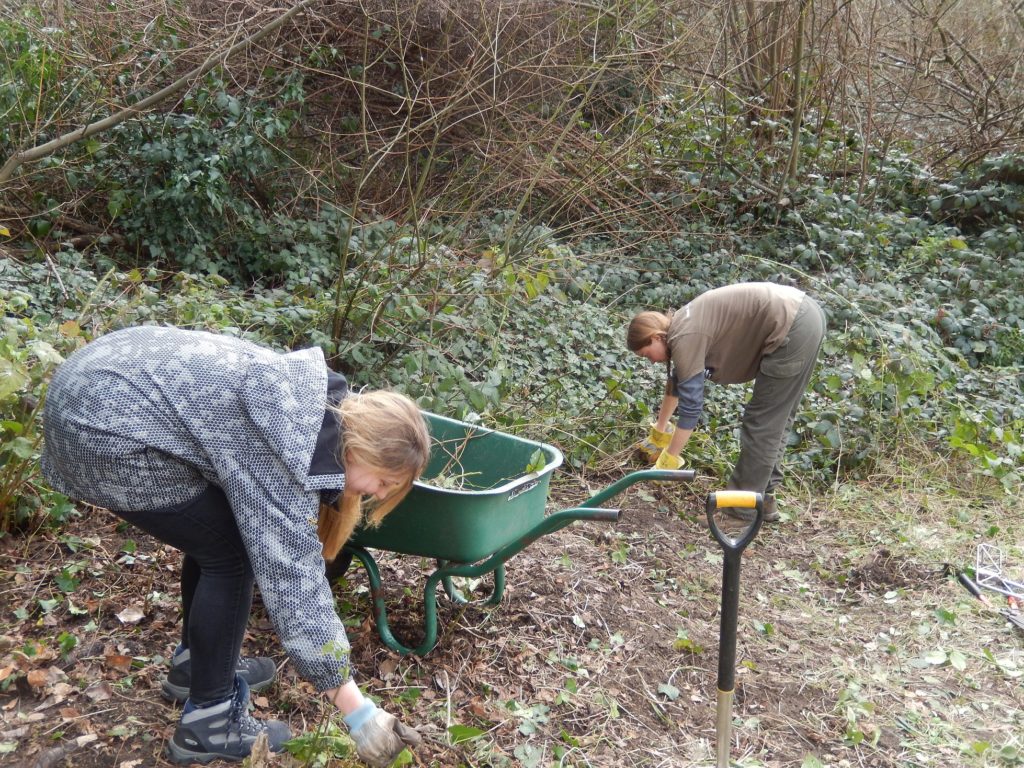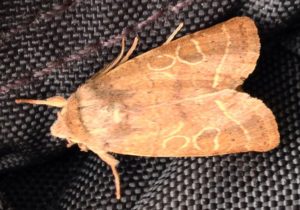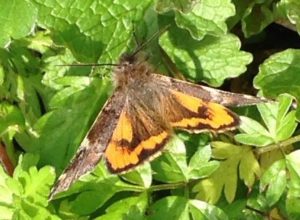
Netty is away so Katherine led the group to, yes, clear some more brambles. We do occasionally do other things, actually. It was pleasantly warm with bursts of sunshine, and we dug out one champion bramble root after another. The ones down here are far more deeply-rooting than those on the bank, have few stems and basal shoots, smaller ‘briar’ root lumps, and much thicker stems. In short, they are the monsters of the bramble world, and sometimes seriously difficult to dig out. It’s easy to believe these are a different microspecies from those up on the bank: there are around 100 microspecies known in the Rubus fruticosus aggregate. It would be fascinating to hear about the genetics of our local bramble populations.
Katherine managed to photograph two Underwing moths:


The two species both have brilliantly coloured underwings, concealed at rest under the cryptically coloured (well camouflaged) forewings, but revealing a flash of bright contrasting colours when they take flight. This is often enough to startle a predator, giving the moth a moment to escape. Curiously, these two species are in different families: Noctua janthe is a noctuid, while Archiearis parthenias is a geometrid. This implies that the trick of having a bold yellow/orange/red stripe contrasting with black has evolved separately at least twice among moths (the same sort of thing happens also in some grasshoppers), an instance of convergent evolution. In other words, if it works, invent it again. N. janthe is common everywhere, while A. parthenias specifically “flies in sunshine around tops of birch trees in spring before leaves develop” (writes Chris Manley in his marvellous British Moths and Butterflies), exactly the case here today. Dial up the right ecological conditions, and the species appear, often.
